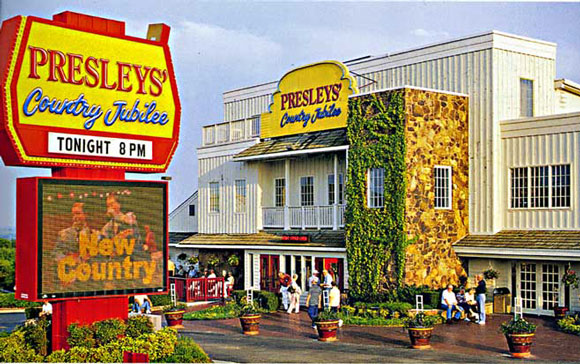
The Presley Theater opened in 1967 on the Highway 76 strip--the first theater in Branson.

Jeerk, 5 Swedish guys who are incredible tap dancers, musicians, and percussion artists.

The show simply called "Six." They are six brothers singing acapella. Probably the top show in Branson.

Inside the Showboat Branson Belle.
Pam and I just returned from our fifth trip to Branson. That would be Branson, Mo. We went for the first time in 1999, not really knowing if we would enjoy it. But we fell in love with the place.
The next two times, in 2002 and 2004, we took my parents. Pam and I visited again in 2008. Then, this year, we took my parents again.
Branson, tucked away in the Ozark Mountains south of Springfield, is a somewhat magical place where traditional values prevail. There’s nothing like it. Branson sets squarely in Flyover America, the heartland. Everything is family friendly.
Branson offers something for everyone. There is Silver Dollar City, a family-oriented theme park. Three outlet malls. Numerous craft shops. Museums. Mini golf. But the reason most people come to Branson is for the shows which perform at over 50 theaters—music, drama, comedy, acrobatics…you name it.
There are acts by people you’ve heard of. The Osmonds, Bobby Vinton, Jim Stafford, Andy Williams, Mel Tillis, Yakov Smirnoff, Mickey Gilley, and many other celebrities, especially in country music, either have their own theaters in Branson or perform there regularly. But most of the shows—and, I would say, the best ones—are by folks you haven’t heard of until you visit Branson. Shows like:
The Presleys. The Hughes Brothers. Six. Shoji Tabuchi. The Brett Family. The Baldnobbers. And many more.
In almost every show, certain values are emphasized:
- The family. So many of the acts emphasize family values, and the best ones (the Presleys, Hughes Brothers, Six, and others) are predominantly family acts. Of all of the shows we’ve seen, only one show had anything off color (Ray Stevens, disappointingly). They keep it wholesome in Branson.
- Love for country. It’s nothing political, no digs at either Democrats or Republicans. Just good old fashioned patriotism.
- Appreciation for military vets. Nearly every show works in some patriotic music and asks military vets to stand, usually broken down according to branch. I’m always proud when Dad stands with other Army vets.
- Christianity. This is what really makes Branson magic. The performers talk about Christ and the importance of their faith. No apologies. You wouldn’t expect Christ to be exalted at one of America’s premier tourist places, but He is. Imagine that in Las Vegas!
This year, a member of Six said at the end of the show, “Branson is a place where we can talk about Jesus, where we speak well of our country, and where you can sing Gospel music.” They then closed with a beautiful acapella version of “Be Still My Soul.” I still have goosebumps thinking about it.
Yes, there are plenty of old people in Branson. But the visitors include many young people and young families, too. Several of the main acts, like Six and Jeerk, seem aimed at a younger audience (though I, at age 54, loved them, so maybe my definition of “younger” is messed up).
Thus far, we’ve seen 21 different shows in Branson, 7 of them more than once. Some of them have come and gone. This time, we saw seven shows during our three days in Branson:
- “Noah: the Musical.” Simply astounding! This play opened in 2008, and closes this summer. You just can’t believe what you’re seeing.
- “Hooray for Hollywood.” A high-energy song-and-dance tribute to great songs from Hollywood musicals and movies. We all loved it.
- “Jeerk.” Five amazingly talented young guys from Sweden in what was voted the Best New Show of 2010. A little bit of Stomp (turning just about anything into a percussion instrument), combined with the most innovative tap dancing you’ll ever see, plus superb music and lots of comedy. I’d drive to Sweden to watch these guys (who have performed around the world).
- “Circle B Chuckwagon Show.” A dinner show with a great meal, but a very disappointing show. The only sub-par act we saw this year. Nice Christian people, but….
- “The Presleys.” Our second time seeing what was the original show on the Branson strip, dating back to 1967. Members of the Presley family combine with a number of other superb singers and musicians. I’d see this show every time we visit Branson. It is everything Branson stands for—faith, family, country. They have the best piano player (by far!) that I’ve seen in Branson, the best Gospel quartet, and the best comedy (Herkimer and Cecil are just hysterical!). A well-oiled, professional show in every way.
- “Six.” Pam and I saw these six brothers in 2008. It’s an acapella show. You’d swear you’re hearing a full band, but every sound you hear comes from their mouths. They came to Branson in 2007 and were voted Best New Group. Ever since, they’ve been named the “Best Show” or “Entertainers of the Year.” Their tribute to their mother, who died of cancer at age 52 (after bearing TEN sons), will make you cry.
- “Showboat Branson Belle.” Pam and I took this cruise in 2008, and knew my parents would love it. Great food, and a wonderful program with music, comedy, and magic. True class all around.
I can’t get enough of Branson. After five trips there are still so many shows I’d like to see. By the time we return in 3 or 4 years, or maybe 2 years, there will be new acts and new theaters. I just hope Branson never loses its soul. I need a place like this to return to every once in a while.
2 Comments

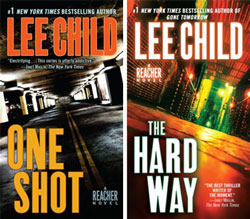 I’ve been reading the Lee Child “Jack Reacher” series in order. I just finished books 9 and 10 in the series. Jack Reacher is a truly original action hero, as lethal as they come. None of these books are art, but they are sure fun to read.
I’ve been reading the Lee Child “Jack Reacher” series in order. I just finished books 9 and 10 in the series. Jack Reacher is a truly original action hero, as lethal as they come. None of these books are art, but they are sure fun to read.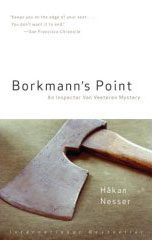 “Borkman’s Point,” by Hakan Nesser, was written in 1993 but not published in English until 2006. It’s part of a series starring Chief Inspector Van Veeteren, whose popularity in Sweden rivals fellow fictional sleuths Kurt Wallander and Martin Beck. So far, five Van Veeteren books have appeared in English, the latest in 2010 (though it was originally written in 1997), and a sixth (written in 1998) is due later this year.
“Borkman’s Point,” by Hakan Nesser, was written in 1993 but not published in English until 2006. It’s part of a series starring Chief Inspector Van Veeteren, whose popularity in Sweden rivals fellow fictional sleuths Kurt Wallander and Martin Beck. So far, five Van Veeteren books have appeared in English, the latest in 2010 (though it was originally written in 1997), and a sixth (written in 1998) is due later this year.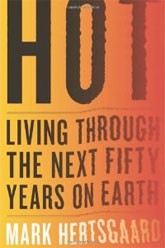 With a merciless heat wave in effect, I’m reminded of a superb book I read earlier in the year, “Hot: Living Through the Next 50 Years on Earth,” by Mark Hertsgaard. It’s the best book I’ve read so far this year.
With a merciless heat wave in effect, I’m reminded of a superb book I read earlier in the year, “Hot: Living Through the Next 50 Years on Earth,” by Mark Hertsgaard. It’s the best book I’ve read so far this year.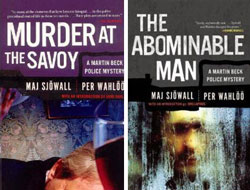 Murder at the Savoy is the sixth book (of 10 total) in the Martin Beck series, by Swedes Maj Sjowal and Per Wahloo. The series has ten books in all, written from 1965-1975. While Martin Beck is the main character, he’s not a dominant lead; most of the books scatter the story among an ensemble cast.
Murder at the Savoy is the sixth book (of 10 total) in the Martin Beck series, by Swedes Maj Sjowal and Per Wahloo. The series has ten books in all, written from 1965-1975. While Martin Beck is the main character, he’s not a dominant lead; most of the books scatter the story among an ensemble cast.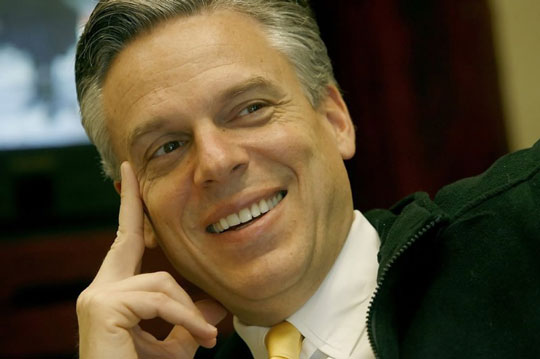
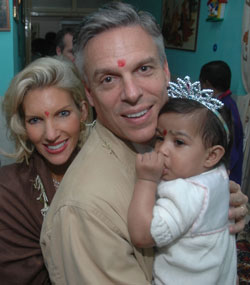
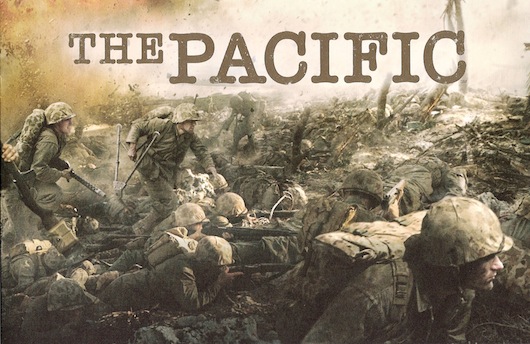
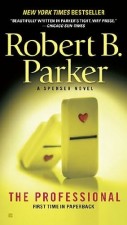 “The Professional,” from October 2009, is Robert Parker’s 37th novel in the Spenser series. Number 38, “Painted Ladies,” came out in 2010, and Number 39, “Sixkill,” appeared in May 2011. And that’s it. Robert Parker died in January 2010, but had books at the publisher and fresh off his typewriter. But the well is running dry.
“The Professional,” from October 2009, is Robert Parker’s 37th novel in the Spenser series. Number 38, “Painted Ladies,” came out in 2010, and Number 39, “Sixkill,” appeared in May 2011. And that’s it. Robert Parker died in January 2010, but had books at the publisher and fresh off his typewriter. But the well is running dry.


